Cease and Desist Letter
-
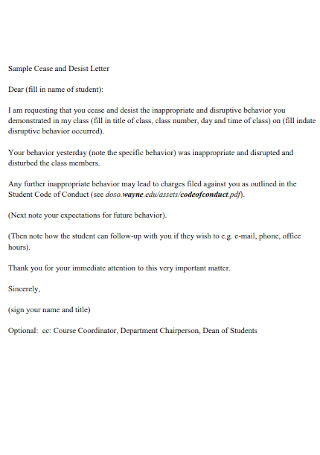
Sample Cease and Desist Letter
download now -
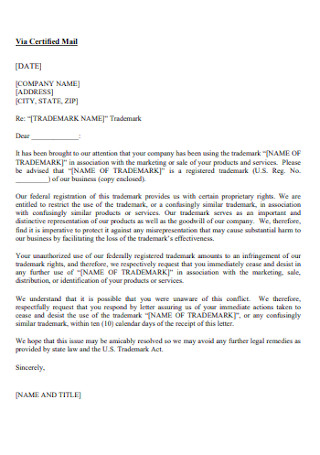
Trademark Cease and Desist Letter
download now -
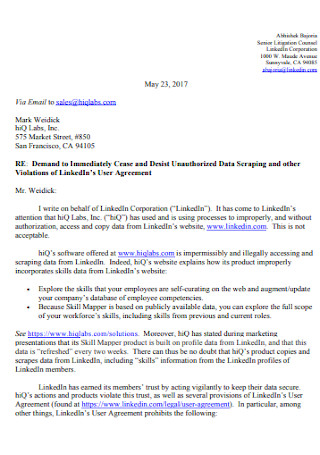
Demands Cease and Desist Letter
download now -
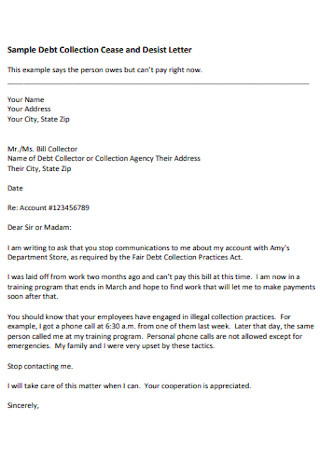
Sample Debt Collection Cease and Desist Letter
download now -
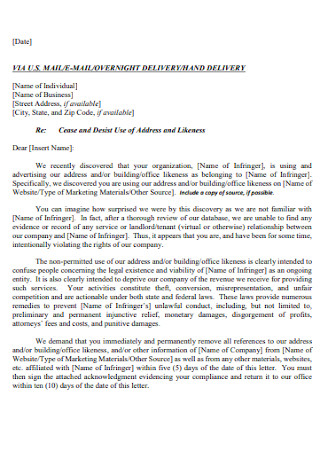
Cease and Desist of Address Letter
download now -

Cease and Desist Letter Notification Template
download now -
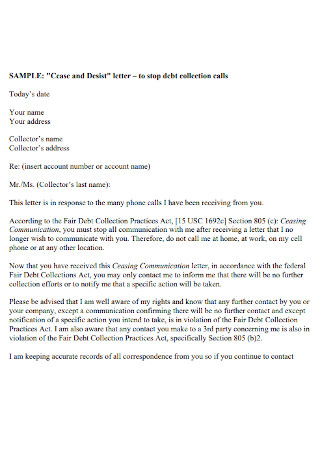
Cease and Desist Letter for Debt Collection Calls
download now -
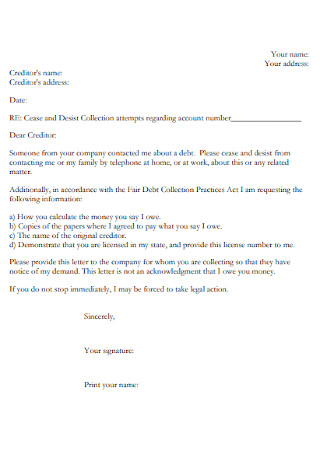
Simple Cease and Desist Letter
download now -
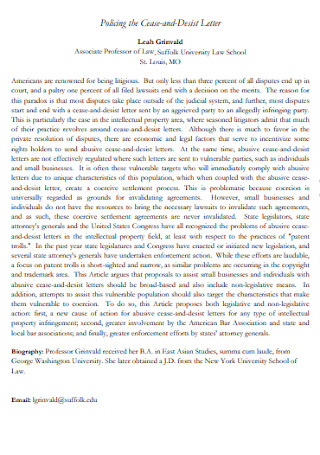
Sample Policing the Cease-and-Desist Letter
download now -
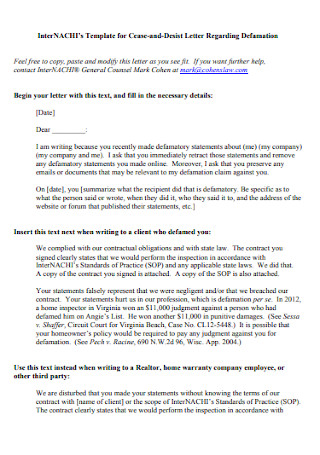
Cease-and-Desist Letter Regarding Defamation
download now -
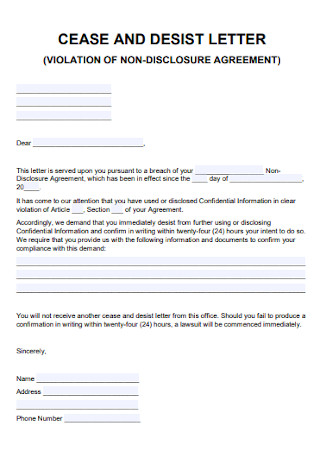
Non-Disclosure Agreement Cease and Desist Letter
download now -

Standard Cease and Desist Letter
download now -
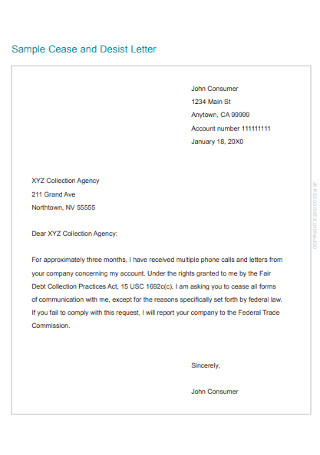
Sample Cease and Desist Letter Example
download now -
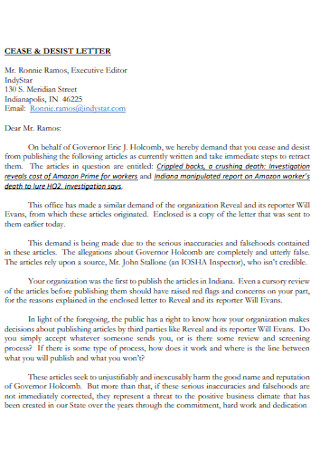
Cease and Desist Demand Letter
download now -
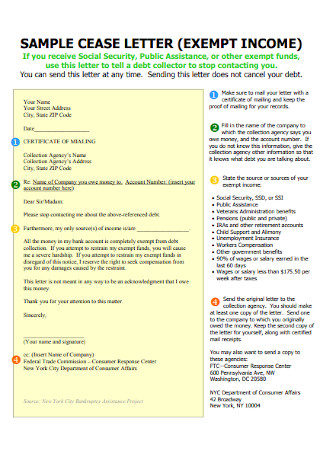
Sample Income Cease Letter
download now -
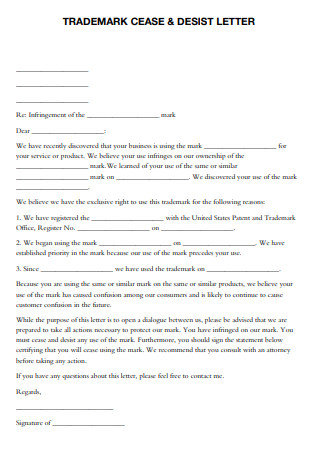
Basic Trademark Cease and Desist Letter
download now -
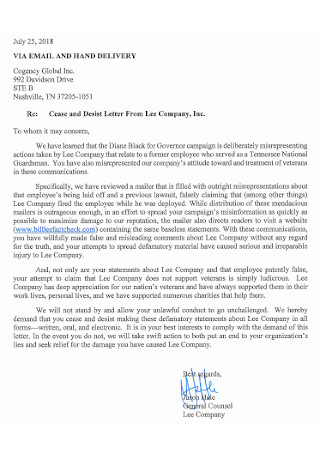
Cease and Desist Letter from Company
download now -
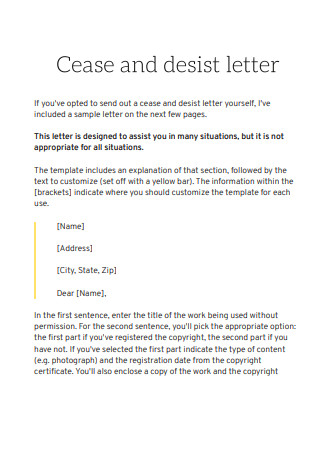
Copyright Cease and Desist Letter
download now -
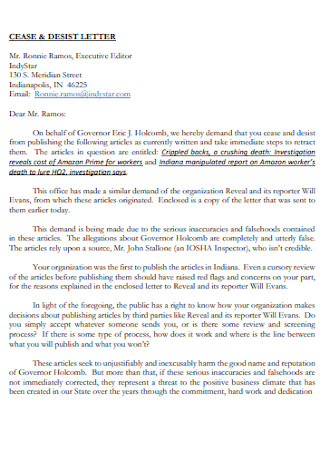
Cease and Desist Letter Format
download now -
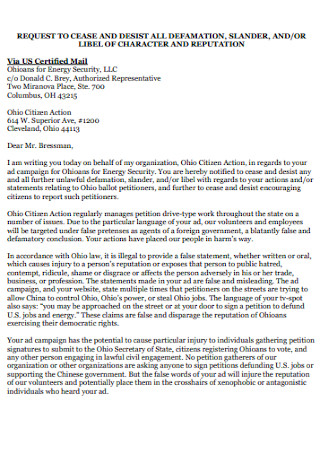
Cease and Desist Letter Defamation
download now -
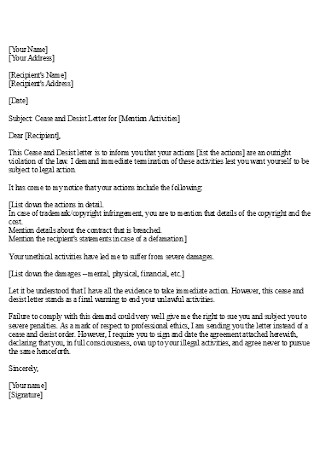
Cease and Desist Letter for Mention Activities
download now
FREE Cease and Desist Letter s to Download
Cease and Desist Letter
What Is A Cease And Desist Letter?
Instances You Can Use a Cease And Desist Letter
How To Respond To A Cease And Desist Letter
FAQs
What happens when you ignore a cease and desist letter?
Do I need to hire an attorney to write a cease and desist letter?
Can you email a cease and desist letter?
What Is A Cease And Desist Letter?
If someone or a business organization is doing illegal activity and you want the activity to stop (cease) and for the perpetrator to not do it again (desist), you can write the person or business organization a cease and desist letter. The letter is a document that serves as a warning to the person. If he or she does not stop the harmful activity, you may take other legal actions such as bringing the case to court. Some people or business organizations use cease and desist letters to intimidate another party by threatening to file a lawsuit against them if no action is made.
The major components of the letter are a demand to stop a specific action done by another person, a set of instructions that the other party should follow, a threat for legal action if the person does not comply with the request, and lastly, a deadline for complying with the request. The letter is usually sent through certified mail with a return receipt as proof that the addressee has received the letter. Most of the time, it is effective in carrying out its purpose. Other times, the sender will have to go through a lawful court process to effect action against the other person’s misconduct.
Instances You Can Use a Cease And Desist Letter
In general, cease and desist letters are useful tools that can help you protect your legal rights. Although they are not legally binding, they are the first step you should take before taking the issue to a judge of the court. The question now stands, “when should you use a cease and desist letter?” Well, there are countless situations where you can utilize cease and desist letters to stop someone from doing a harmful action. Below are some instances you can use cease and desist letters.
1. Violation of Intellectual Property Rights
According to statistics, approximately 60,000 to 90,000 cease and desist letters are issued by law firms in a year as a response to intellectual property rights violations. These violations range from trademark infringement, breach of trade secrets, copyright violations, and patent infringement. For example, someone who duplicates and copy the personal work of another. If someone is stealing content from your website such as written works without your permission and has taken the content under the impression that he owns it, this may be considered as a violation of your copyrights. You may serve the website owner a cease and desist letter and request for the content to be taken down or else legal actions will be taken.
2. Character Defamation, Libel, and Slander
Any comments, whether spoken by the mouth or printed in a paper, that is completely untrue about another person that when spread out causes harm to that person’s reputation or business is considered character defamation, libel, or slander. You can send a cease and desist letter to the person who is responsible for spreading untrue rumors about you and personally request that he or she stops from doing so or else you will take legal actions. For example, a person who is spreading rumors to the public that your products are a health hazard and without proof publicly declares that it causes cancer.
3. Harassment, Stalking, and Invasion of Privacy
Stalkers can be tricky to deal with, they can range from mild to dangerous to the point that you may have fears for your life. A good way to deal with them is by threatening legal actions by sending them a cease and desist order. If they do not stop harassing or stalking you, you can threaten them with a lawsuit. The letter is a good way to show that you are serious about the situation and are not afraid to take action. The most common type of harassment that often results to cease and desist letters are debt collection harassment. You can actually file a restraining order or cease and desist orders to debt collectors who frequently call you and aggressively intimidates you to pay your debt. A restraining order is a type of cease and desist order that courts issue as a response to stalking and intimidation.
4. Illegal Squatting on Property
Squatting is an unlawful occupation of an uninhabited building or piece of land. In dense cities, illegal inhabitants are quite common. It can be difficult to deal with these settlers. Before you take court actions, the first thing you should do is send them a notification through a cease and desist letter. The letter should contain a request that they should leave the premises or else actions will be taken.
How To Respond To A Cease And Desist Letter
Cease and desist letters are not legally enforceable on its own. Nevertheless, receiving one is a serious matter that you should respond with concern. Properly assess the situation and acknowledge that communication has been sent to you. Think about how the request will impact you financially and legally. Normally, cease and desist letter offers a short time frame for an action or response. It is advisable that you take some action immediately. Below are steps to help you respond to a cease and desist letter.
Step 1: Immediately Comply with the Demands
The first thing you should do when you receive and read a cease and desist letter is to assess the contents. If you feel like there is a valid cause behind the letter and the request, you should comply immediately. Otherwise, a potential lawsuit would ensue that could cost you your life savings. If the demands contained in the letter are reasonable to you, then there is no problem complying with them.
Once you have complied with the request, the sender will no longer have a cause of action and you could avoid lawsuits. However, this is not always the case especially when you fail to notify the sender that his request is acknowledged and you are glad to comply. So make sure that you send him a reply containing your decision on the matter.
Step 2: Hire a Lawyer to Evaluate the Situation
If you are unsure of how to draft your response, it may be wise to enlist the help of a lawyer. To be sure that the sender does not sue you for any actions you might have done, have your lawyer evaluate the situation and come up with an ideal plan to address the situation. He can act as your middleman in negotiating what actions should be done in what conditions. You can ask the lawyer to draft the response himself that would effectively communicate your intentions to the sender.
Step 3: Negotiate with the Sender
After carefully evaluating the cease and desist letter and its legal and financial implications, you find that neither complying with the demands nor ignoring it is the right choice. Your other option should be opening negotiations to arrive at a mutually agreeable outcome. Consider responding to the letter asking if you can talk it out and negotiate the situation. Patiently wait for the response of the complainant whether he is willing to entertain a settlement proceeding to solve the conflict. If he answers in the positive, hire the services of a lawyer so he can walk you through the complexities of the negotiation proceeding and help you arrive at a reasonable and agreeable outcome.
Step 4: Resolve the Conflict
Once negotiations are done and the parties have come up with mutually agreeable terms or solution to the problem, this means you have finally resolved your conflict. All there’s left to do now is follow-through with your decisions. Honor what has been agreed during the negotiation proceeding and avoid costly litigation.
FAQs
What happens when you ignore a cease and desist letter?
The most common thing that will happen is you will get more letters until you respond to the sender. If you keep ignoring it, there is a higher chance that you will end up in a lawsuit. You will start receiving court orders like a summon and a formal legal complaint. Later on, the court may order the issuance of a restraining order against you.
Do I need to hire an attorney to write a cease and desist letter?
You do not need a lawyer to write a cease and desist order. If able, you can write it yourself. You can even use one of our templates above to start writing one now. However, if your accusations or complaint attaches great matters, then hiring the services of a lawyer can be really helpful. You can consult an attorney so you can have a better understanding of the action you want to take. He can help you understand the seriousness of the situation.
Can you email a cease and desist letter?
Yes you can send your cease and desist letter via email. However, if it involves a serious matter and you genuinely want to press charges in the event the recipient does not comply with your request, then it would be best to not send the letter via mail. The letter can be used as proof of evidence and documentation that you have properly notified the person of his action and that if he does not stop, you will file a lawsuit against him. So, the best way to send it if you want to use it in court as evidence is through certified mail with a return receipt that you can show during the trial
Instead of hiring the services of an attorney too early, take preliminary matters into your own hands and deal with the situation formally and civilly. Writing a cease and desist letter should be the first step when dealing with situations of unwanted actions from another person. Not only does it serves as notification to the person that what he is doing is annoying and encroaching your personal rights, but it also serves as documentation that you have sent such notice and are prepared to take legal actions against the person if necessary. When you are ready to write the letter, you can use our sample templates above for reference. If you are unsure of the letter’s language and tone, consider soliciting a lawyer’s opinion before mailing the letter.
